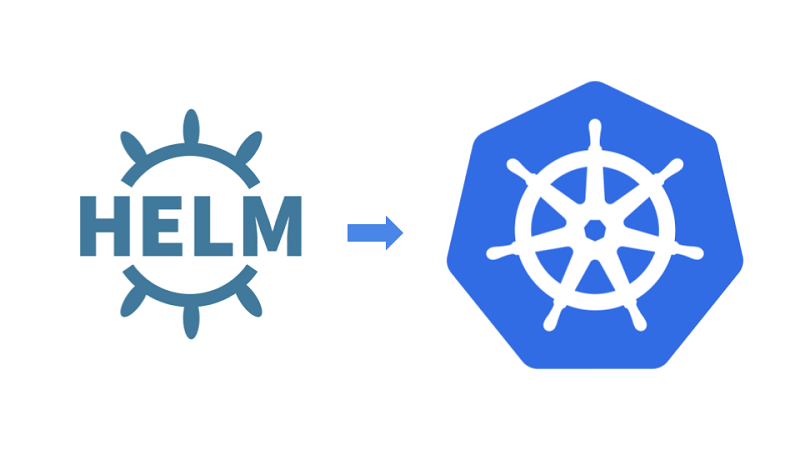
Kubernetes has quickly become one of the most popular container orchestration platforms, with development and operations teams worldwide using it. Nearly 50% of the organizations have adopted Kubernetes already in 2021. Despite Kubernetes’ fast popularity, deploying and managing applications can be time-consuming and challenging, requiring the operator to develop and configure several inter-dependent configuration files for different components of the systems being deployed.
Fortunately, there is a perfect solution available to resolve this huge concern, called Helm. Helm makes it easy to package Kubernetes applications, configure them, store them in Helm repositories, and deploy them to your clusters. Furthermore, it enables the application structure to be described using intuitive helm-charts and managed using simple commands.
What exactly is a helm repository, and why is it useful when using helm charts? Read on to find out.
Helm Repository
Helm repository is the location where charts are stored and shared. Helm repositories make it easy for developers to share their apps with users and for users to find the required apps in a centralized area. Helm repository by JFrog offers privacy, high availability, access control, and immensely scalable storage that provides enterprise-ready, advanced repository management for Helm charts.
Private and Public Repository
You can protect your charts from unauthorized access with private repositories. You can also specify a set of actions that different user groups can perform by setting permission targets. Moreover, you can choose who may and may not access specific repositories. By changing the access level to Public, anonymous users will be able to access the repository. This access, however, will only be for reading operations. You will always require authentication for write operations, even in public access mode.
Helm Charts
The main goal of Helm was to provide users with a more convenient way to manage all the Kubernetes YAML files that are created on Kubernetes projects. Helm resolved this issue by creating Helm Charts. Each chart is a bundle containing one or more Kubernetes manifests. By using the Helm chart, you can package your applications and then install and update your complex Kubernetes applications using Helm. You can even use pre-packaged, production-ready charts for popular software like MySQL, NGINX, and MongoDB from a stable chart repository like Bitnami or ArtifactHUB.
You can either create your chart repository and host it online or check the public library for the most used charts. A chart repository is an index.yaml file from a static web server. Hence you can create a chart repository out of anywhere.
Why Is Helm Repository Useful When Using Helm Charts?
One of the most significant advantages of Helm charts is their ability to be packaged and shipped like standard software artifacts. You can use pipelines to validate and test changes to charts before pushing them to ‘production,’ a Helm repository, much like you can with other pieces of infrastructure like Docker images. Following are the ways Helm repository can be beneficial when using Helm charts:
- Suppose your developers and users are located across several geographic regions. In that case, you can best support their needs by creating a Helm repository with advanced replication options and integrated disaster recovery so that charts remain available even if one instance of your repository fails.
- Suppose you want to use Helm charts from third-party repositories while maintaining your local chart repository simultaneously. In that case, you can aggregate both remote and local repositories into a single “virtual” repository. As a result, your developers and users will be able to upload and download any packages they require from the virtual repository without going between multiple Helm repositories.
Local Helm repositories offer security and privacy, allowing organizations to share Helm charts while maintaining tight access control across the business. For instance, the Helm repository controls users’ ability to browse resources via cluster-wide authorizations or specific credentials. This suggests that developers only have access to qualified resources to work with. An integrated Helm repository allows you to use multiple role-based access control capabilities within your system. You can also configure granular access controls to restrict who can download and run your app. Granular access control allows you to specify who can use which charts and avoid sharing charts with people who should not have access to them.
The Helm framework is continuously under active development. Historically, each new version has resulted in significant changes to how Helm charts are packaged and distributed.
Conclusion
Helm repository enables the app structure to be defined using convenient helm-charts and managed using simple commands. Moreover, it offers high security and privacy, scalable storage, high availability, access control, and complete automation. In addition, it is significant for virtual, local, and remote chart support.
You might also like our TUTEZONE section which contains exclusive tutorials on how you can make your life simpler using technology.




